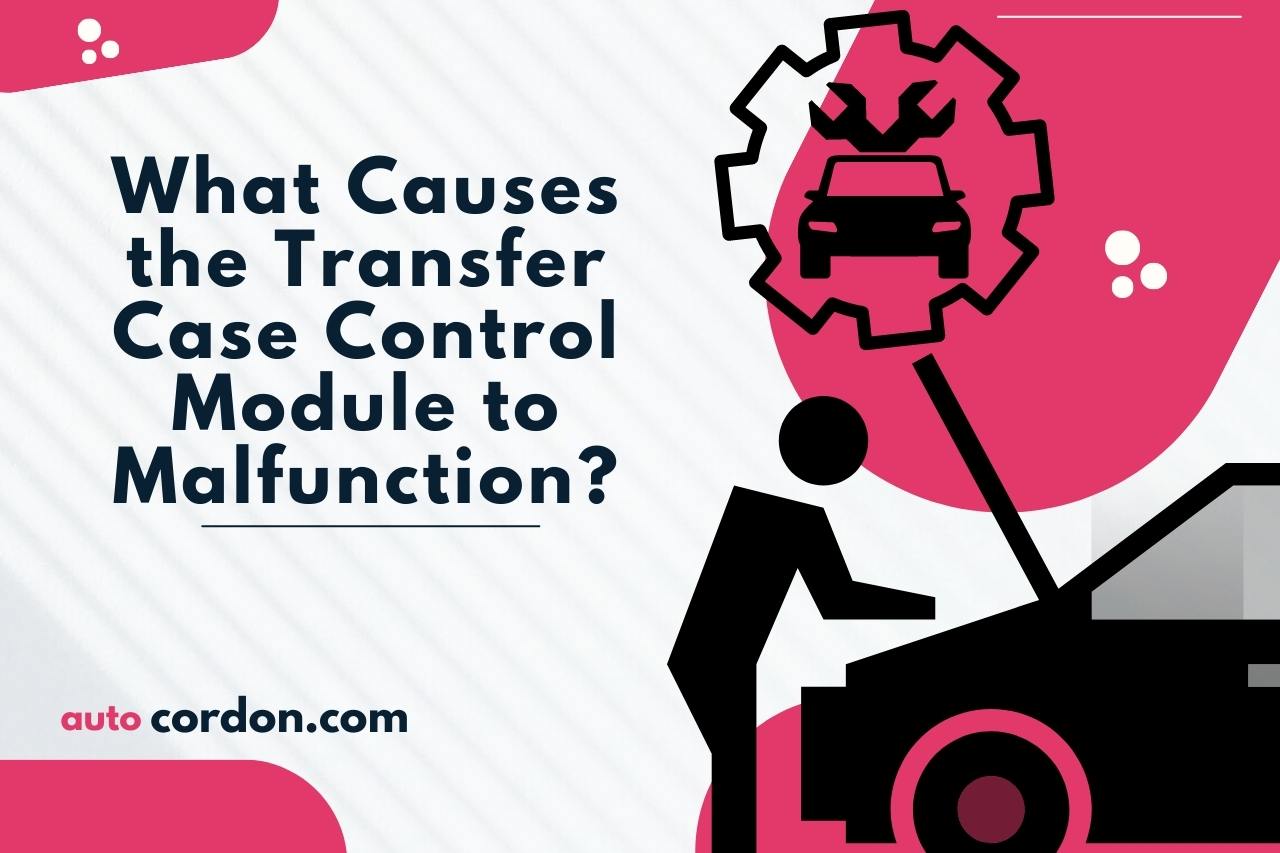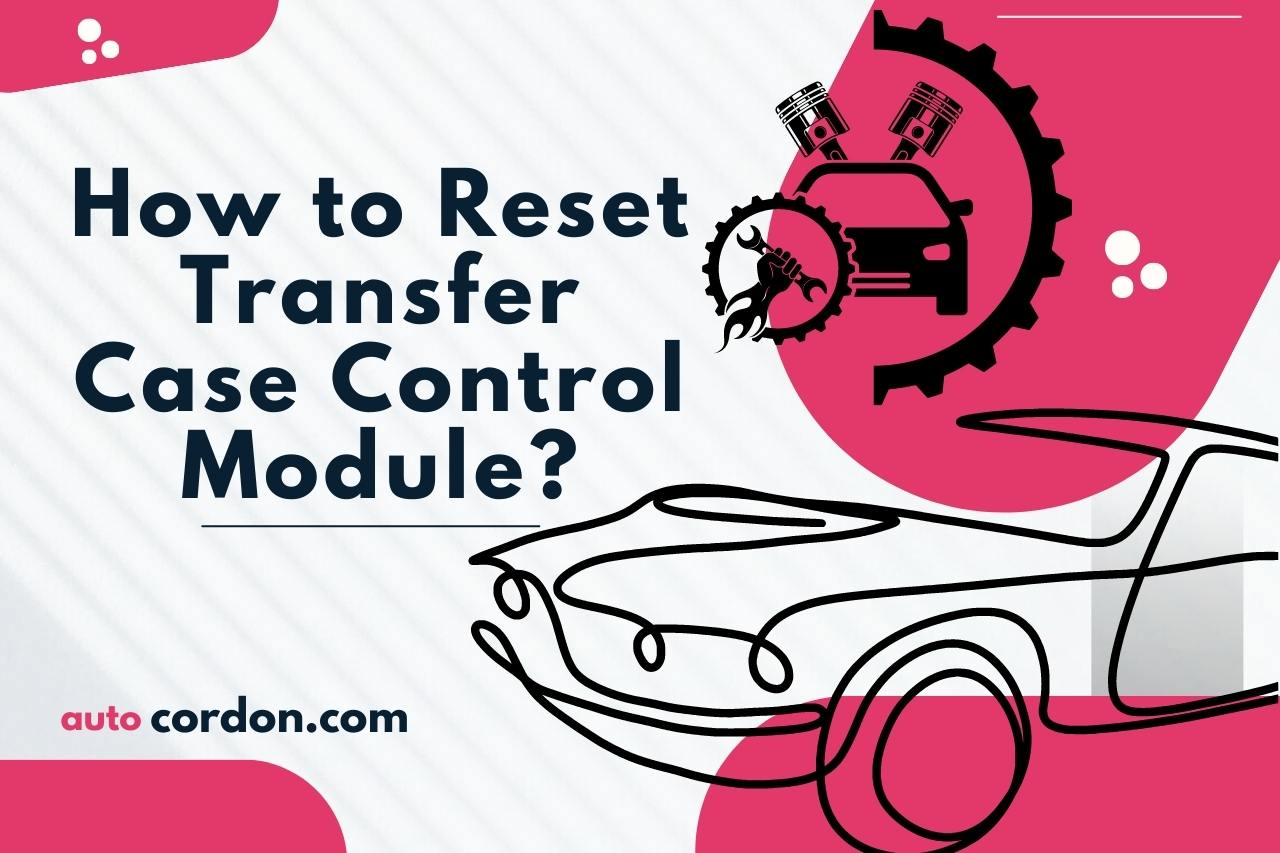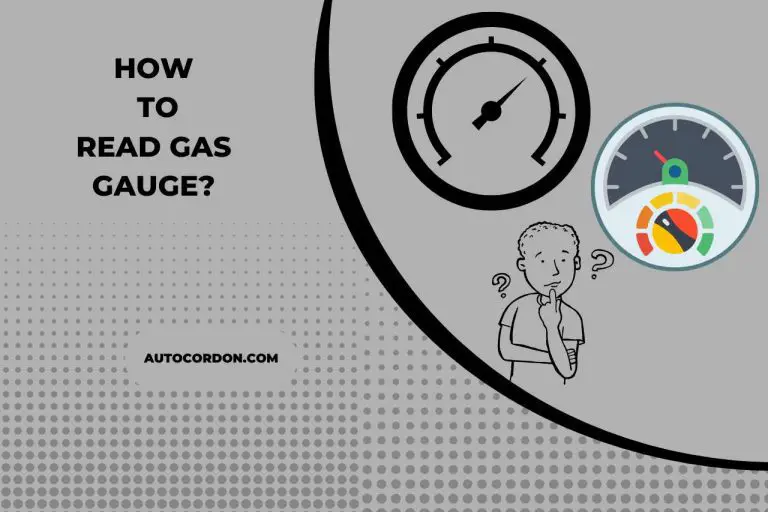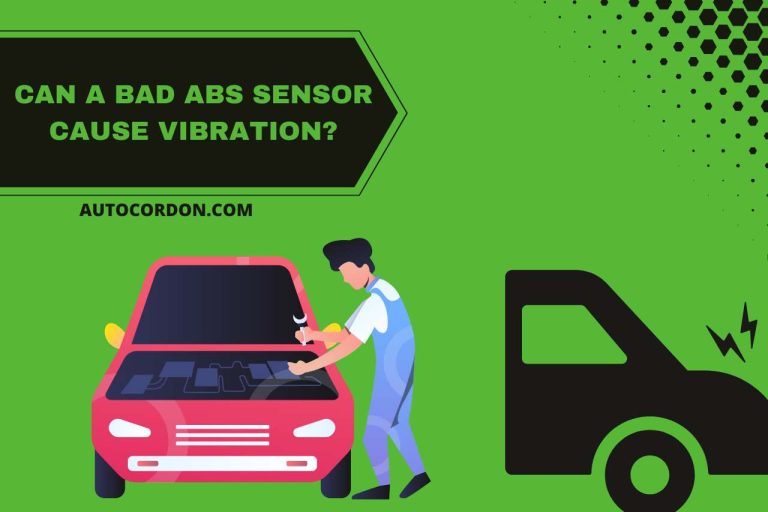How to Reset Transfer Case Control Module? Mastering the Reset!
For many modern vehicles, the transfer case control module plays a pivotal role in regulating the operation of the 4-wheel drive system. Like any electronic component, it may occasionally require a reset to function optimally. Understanding “how to reset transfer case control module” can be an invaluable skill for vehicle owners and technicians alike. This guide will delve into the step-by-step process to ensure that the reset is conducted safely and effectively, potentially saving time and avoiding unnecessary repair costs. Whether you’re a seasoned mechanic or a diligent DIY enthusiast, mastering this procedure can be a game-changer.
What is a Transfer Case Control Module?
The Transfer Case Control Module, or TCCM, is the central component governing your vehicle’s four-wheel-drive system (4WD). It acts as the main distributor, channeling energy from the engine to both the front and rear axles. Positioned strategically between the transmission and differential, the TCCM’s primary purpose is to ensure optimal power distribution when the engine sends signals to shift gears.
As a result, it plays an indispensable role in enhancing your vehicle’s performance, especially in situations demanding the prowess of the 4WD system, making every drive both efficient and adaptive to varying terrains.
What Functions Does the Transfer Case Control Module Perform?
The functions of the transfer case control module are central to ensuring optimal vehicle performance, especially when driving on challenging terrains.
The Transfer Case Control Module primarily orchestrates the power management for the four-wheel-drive (4WD) system, allowing for improved driving on varied terrains.
4WD System Powering: It’s pivotal in driving on wet, rugged terrains such as snow or mud, ensuring that the car remains stable and responsive.
Friction Management: The module provides the essential friction to both front and rear axles, allowing for balanced and controlled motion, preventing unnecessary slippage and wear.
Energy Transfer: A core function is its ability to channel energy efficiently from the engine directly to the wheels. This energy transfer ensures that the vehicle responds promptly to driver inputs, especially during acceleration or when climbing.
By understanding these functions, it’s clear that the transfer case control module isn’t just a component; it’s the heart of the vehicle’s power distribution, crucial for both daily drives and adventurous off-road escapades. Ensuring its proper functioning can make the difference between a smooth ride and a potential off-road mishap.
Why would you Need to Reset a Transfer Case Control Module?
Resetting a Transfer Case Control Module is crucial when facing operational hiccups, primarily because it governs the power dynamics of your car’s four-wheel drive.
Performance Impact: Persistent issues with the module can degrade the performance of the 4WD system. Without a timely reset, the vehicle might exhibit erratic behavior, with power not being efficiently channeled through the gears to the wheels.
Handling and Safety Concerns: If left unaddressed, a faulty Transfer Case Control Module can lead to significant handling problems. The unpredictability in power distribution to the front and rear axles can endanger lives, leading to potential accidents.
Noise and Disruptions: Another symptom of a malfunctioning module can be unwarranted noises emanating from the transfer case. This isn’t just about the auditory annoyance but is often a signal of underlying mechanical stress or damage.
Being informed about the implications of a non-functional Transfer Case Control Module and the necessity of its reset can be the difference between smooth rides and potential on-road perils. Ensure you’re attentive to any signs, prioritizing safety and performance.

What Causes the Transfer Case Control Module to Malfunction?
Understanding the factors causing the Transfer Case Control Module to malfunction can significantly help in ensuring prolonged functionality and safety. Ranging from lack of lubrication to external environmental factors.
Lubrication Issues: Proper lubrication of the transfer case is pivotal. Without it, you’re inviting a host of problems. The module can overheat, and in severe instances, seize up, affecting overall vehicle performance.
Rigorous Off-road Usage: Pushing your vehicle consistently on off-road terrains can strain the module. Moreover, consistently exceeding the vehicle’s towing capacity can also lead to malfunctions over time.
Dust and Debris Accumulation: If your Transfer Case Control Module becomes clogged due to dust, debris, or other foreign particles, its efficiency can be compromised. Regular cleaning and maintenance can help avoid such issues.
Physical Damage: Ignoring the above factors or subjecting your module to undue stress can result in physical damages like cracks, which further exacerbate malfunctioning.
In essence, while the Transfer Case Control Module is designed for durability, it is not impervious to neglect or misuse. Regular checks, maintenance, and being aware of the listed causes can go a long way in ensuring a seamless driving experience.
What are the Signs that Indicate a Need for Resetting the Transfer Case Control Module?
If you are uncertain if your car’s transfer case control module is failing, the following signs can help you find out.
-
Weird Noises
One of the common signs your transfer case control module is malfunctioning is when weird noises are made through the transfer case.
-
Issues in the Gears
You will find it challenging to shift the gears, or the gear starts slipping and sometimes does not shift.
-
Lack of Power in the Four-wheel Drive
The front and rear axles will lose their power to coordinate with the transfer case control module because it does not receive the necessary power to the wheels. As a result, your wheels may not be able to provide the required traction to drive off-road, and there are possibilities for your vehicle to get stuck in mud or snow.
-
Electrical Issues
Another way to determine your transfer case control module is declining is when you start facing issues in the electrical system. The engine lights can start to flicker, notifying a warning signal.
-
Trouble Starting the Car
Since a bad transfer case control module is related to the engine, the programming system can be disrupted, resulting in trouble starting the car.
How do you Locate the Transfer Case Control Module in your Vehicle?
Locating the transfer case control module before resetting the component is crucial. The transfer case control module is located between your vehicle’s transmission and the differential. It is connected by a drive shaft and axles that transport the engine power to the transfer case control module.
What Tools or Equipment are Required for Resetting the Control Module?
Before you start resetting the transfer case control module, you must prepare yourself before proceeding. However, you will not need any tools or equipment for resetting.
How to Proceed with Resetting Transfer Case Control Module?
Resetting the Transfer case control module will help fix the issues you are facing; thus, to reset, follow the instructions below.
- Turn on the key on the ignition and wait for the engine lights to turn on the gas.
- Once the alarming noise in your car stops, press the brake paddle down, pass the kick-down switch and leave it for 10 seconds.
- Turn off the car and wait for two minutes, and now the transfer case control module is reset.
- After a few minutes, turn on the car.
FAQ
Should I Check the TCCM?
In determining whether you should check the TCCM, or Transfer Case Control Module, consider the symptoms your vehicle displays. If you notice issues with the 4-wheel drive function, unexpected shifting, or receive error codes related to the 4WD system, checking the TCCM becomes essential.
The TCCM is responsible for managing the transfer case’s operations, and any malfunction can impact the vehicle’s performance. Regularly inspecting it can help in early detection of problems and can save potential repair costs in the future. If in doubt, it’s always advisable to consult with a professional or refer to your vehicle’s manual.
Can I Drive a Vehicle with a Damaged Transfer Case?
Driving a vehicle with a damaged transfer case is not recommended. While it might be technically possible to operate the vehicle, doing so can lead to further damage, compromised safety, and unpredictable driving behaviors, especially in conditions demanding 4WD. The transfer case is crucial for distributing power to both the front and rear axles.
If it’s compromised, you may experience grinding noises, difficulty shifting, and even total loss of power to the wheels. It’s always best to address such issues promptly and avoid driving the vehicle until the transfer case is repaired or replaced to ensure safety and protect the vehicle’s overall integrity.
Watch this one,
Video Credits – The Eddys Garage
You May Also Like
- Digital Odometer Display Not Working – (Step-by-Step Solutions)
- Take Control: Programming Your Jeep Grand Cherokee Key Fob
- How to Thaw a Frozen Radiator? Let’s Find Out

Madusha is a writer for Autocordon.com and a seasoned mechanic with a profound passion for all things automotive, particularly the intricate world of vehicle transmissions. With years of hands-on experience in the garage, Madusha’s expertise extends from routine maintenance to complex repair solutions. In the bustling auto repair community, Madusha is known not only for precision and skill but also for an enthusiast’s zeal for cars that transcends the workshop.








